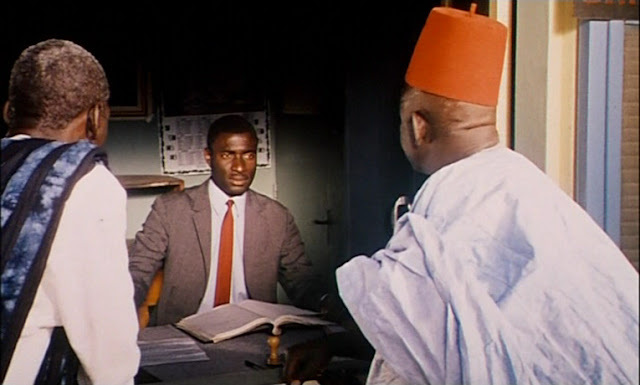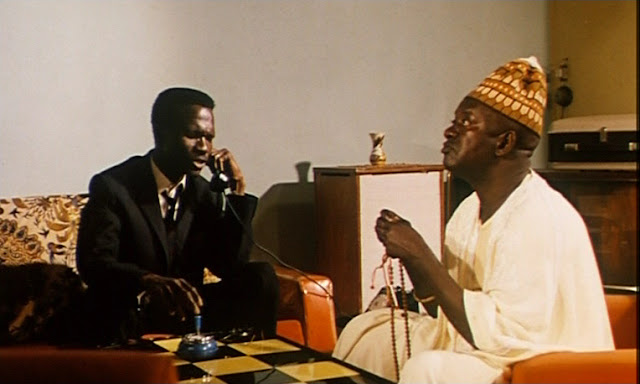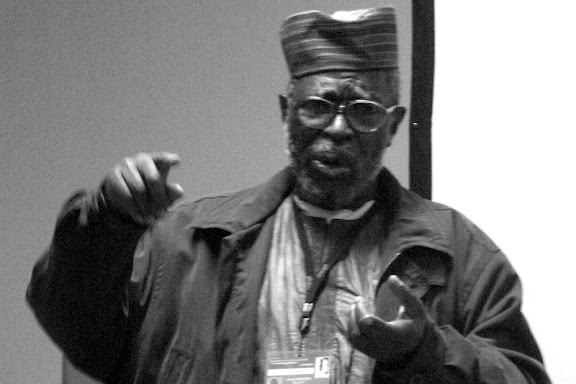In a small village of Burkina countryside, the young Pugbila is being raped in the night after the sacred danses. She is married by her father the day after, and leave the village to live with her husband. But the village is touched by an epidemy : children are dying. The elders decide to call for the marabout, who lead a ceremony : the Songho, which is supposed to be able to find the cause. Pugbila's mother is conviced to be the witch, and must leave the village. Her errand, being repelled by everyone will lead her to the capital, where her daughter will try to find her.

The movies whows us a busy and colorfull Africa, far away from any prejudice of pauverty. No miserabilism, the topic is somewhere else. The easy traditionnal way to solve problems, calling the Manes to help, and the common practice to point at a woman as the scapegoat of any problem is at the center of the realisator's concern here. Scenes shot in a « witch shelter » exploits the contrats between the young and beautiful Pugbila and these old women, who live in a junkyard, only by charity of the « Ministere du developpement de la femme ».
It's a reality of Africa, how traditions can be a weight for supersticious people, and a curb to development. Maybe the subject could have been tackled with less insistance, and smugness (not. In the shelter's scenes). The whole story is a way to tell us something, and is the narration get very secondary in the second part of the movie.

Errance, wanderring : aimless for the mother who doesn't know hos to survive, and determination of her daughter, who wants to save and rehabilitate her. This girl, of the new generation who is asked to stand and walk. That hope, symbolised by the new generation is a message that join a common topos in african cinema : the young girl who bring truth and peace into a conflictual situation, with dignity and determination. Pugbila is something of the princess of Ceddo.
The first scene is a beautifull danse of youth, the young girl of the village are both sensuals and energic. Plans are long, the crane is used with dexterity and inventivity. But during the movie, this virtuosity disapears, for the benefit of more statics plans, well composed and very colored. But there is no more surprise, no real invention after this. This is especially perceptible when the narration rythme get slower in the second part.
I must say delwende is a good movie, the immerge us into the traditions and the customs of a small village. But it hardly get to something more that a good « thesis movie », militant for social changes.
Realisator
S Pierre Yamaedo is born in 1955 in Koudougou (Burkina Faso). He studies cinema in Paris (Conservatoire Libre du Cinéma Français), and makes his first short in 1984 : « L'oeuf Silhouette ». His first feature, Laafi, is selected for the Festival de Cannes 's Prix de la critique. He gets a prize at the 1993's Fespaco for «Wendemi ».
A movie by S. Pierre Yamaedo.
2005
With Blandine Yameogo, Claire Ilboudo and Céléstin Zongo.
Regard Hope Award, at 2005's Cannes Festival.












